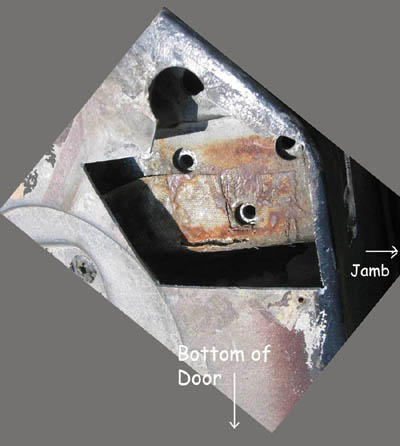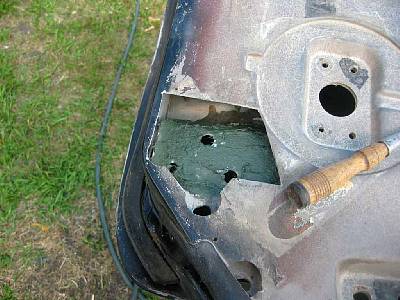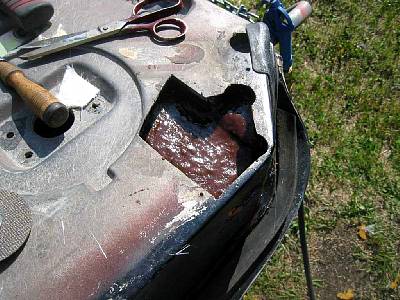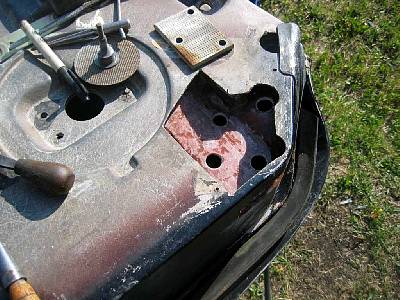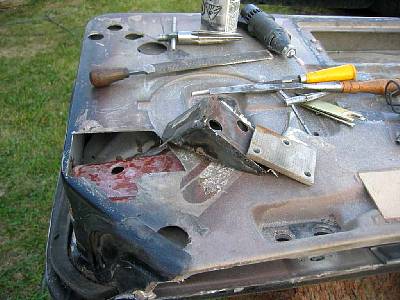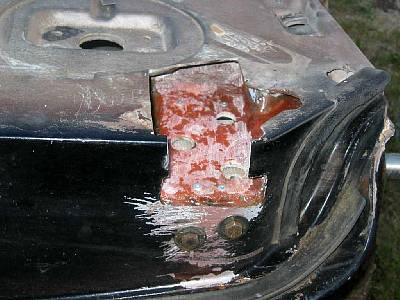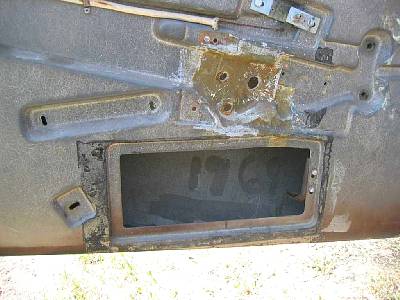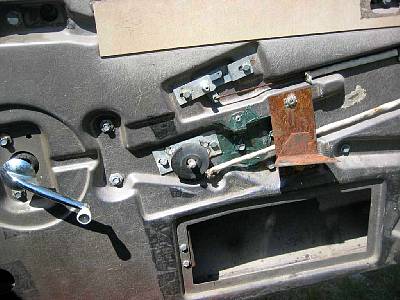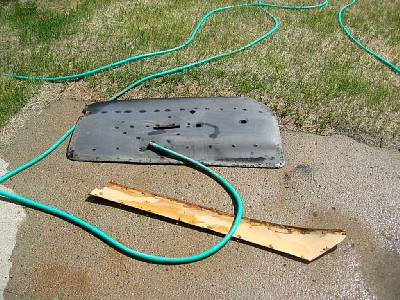
Bob's Studebaker Resource Website
Studebaker Avanti/Avanti II - Door Hinge Repair
( Gordon Richmond)
Symptoms With the door slightly open and clear of the latch, move the back edge of the door up and down. If there is clunking movement, then the hinge needs new bushings. If the door moves up and down easily without noise, then the inner panel needs to be reinforced at the hinge mount pads. If the door requires some effort to bring up to the latch level, then the door hinge to door panel needs to be adjusted. This can be involved and tricky to do so that the door is properly gapped and doesn't scuff the paint on the front door opening at the horizontal ridge. If the inner panel needs reinforcement, then the door has to be removed, the captive plates for the hinge mounts removed, and thick pieces of fibreglass plate with the captive plates attached are bonded to the backside of the panel where the captive plates were located. If you have to do this or have it done, e-mail me after mid Aug. and I will send you a tracing of the patterns I used for the reinforcements. I made my own stock and it was approx. 1/4" thick or more. I used VetteBond #880 as the bonding agent. I believe this procedure was performed by Avanti Motors during Avanti repairs for soggy doors.
Bill Patterson (WCP - SDC Forum)
|
WCP, you have described the situation better than I did. I'd like to add, and this is sort of speculative on my part, but not ALL that much, that the underlying reason for this problem is that the body engineers didn't really understand the properties of the fiberglass that they were working with, or else miscalculated the forces involved. Both steel and fiberglass are elastic; apply a force to them, and they bend. Remove the force, and they spring back to their original shape. Where they differ is in what happens when the force exceeds their elastic limit. Steel will bend, and then stay bent, but still retain most of its original strength. Think of a bumper bent in a small collision; it's been distorted, but it will require a lot of effort to bend it back straight again, right? Fiberglass, when it exceeds its elastic limit, simply fractures. Or the resin component turns into powder, and the inherent stiffness of the material goes away. When the two materials come into contact, and a load (or force) is carried from one into the other, strange things begin to happen. The forged steel hinges in the Avanti are broad and thick, and almost impossibly stiff relative to the flexibility of the door material. So you open the door, and the wind catches it, and swings it out hard against the stop. And where is the stop? Built into the hinge, right? So the hinge hits a positive stop, and the door, having some momentum, carries on for a bit. It does that by throwing a mean bend into the fiberglass panel to which the hinge is bolted. You get a stress concentration where dissimilar materials are fastened together. Under an overload situation as described above, all that concentrated stress is applied to about 1/4" of fiberglass immediately surrounding the perimeter of the hinge leaf where it bolts to the door. The fiberglass within that perimeter is braced by the hinge, which being many times stiffer, takes all the load. Further away from the the hinge, the fiberglass just gives elastically, and later bounces back. But right around the perimeter of the hinge, the forces are so great that the resin crumbles, or parts under tension. You look at a door which has failed this way, and there is an outline of the hinge leaf, made of crumbled fiberglass. Much of the glass fiber is still intact, which is why the door hasn't flat-out fallen off, but the resin which which makes it stiff has turned to powder. In my inexpert opinion, Studebaker goofed when designing the Avanti doors. Instead of using a hinge much like the regular Lark/Hawk hinge, only beefier, they should have designed a hinge made of a light stamping or tubular steel, and made it long enough to reach about 2/3 the length of the door, with fastenings at numerous points along its length. That would have eliminated the stress concentrations, and made for an overall lighter car, because BOTH the steel hinge and the fiberglass door structure could have been made lighter, because the loads imposed by the door's static weight, and its momentum when coming up on a stop would have been spread over a much larger area of interface between the two dissimilar materials. And instead of building the door check into the upper hinge, they should have made it a separate part, as it is on Larks, Hawks, and all other Studebakers. Gord Richmond,( within Weasel range of the Alberta Badlands)
|
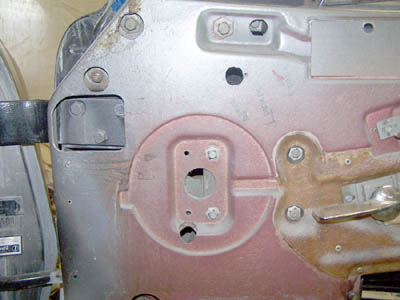
|
| Above, a closer view of the repair area note: this is not the same door as below.. |
